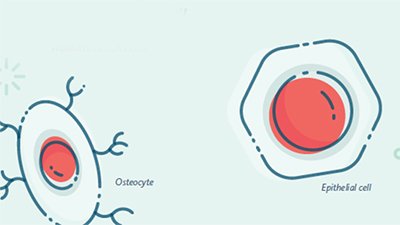Human Vision: Amazing Uniqueness of Human Eyesight
Human vision is incredible. The human eye and brain are adept at recognizing objects, often even when they are not fully visible or oriented at different angles than usual. For example, by seeing just a silhouette of a cat, even small children can identify what the animal is. Making out the faintest trace of a streetlamp in fog, our eyes instantly relay to our brains the identity of the object. Seeing a bird in the sky with wings on the downstroke or upstroke does not confuse us; we can clearly recognize the shape as a bird. On average, the time it takes for this process of perception and recognition is within 70 milliseconds, or about half the time of an eye blink.1 Although we often think of our eyes as what we see with, we really “see” with our brains. Except for the lens and cornea, the rest of the eye is really part of the brain.
Human Vision: How Do We Recognize What We See?
Do we have to see a full or partial outline of the shape of an object to recognize it? No, and for those of us who are artistically “non-gifted,” the point is easy to make. While we cannot draw a DaVinci-like human form, we can still draw a stick figure of a human, and others immediately know what it is. If you can’t draw a bird flying in the sky—no problem—you can make a modified “m” at the top of the page, and people “see” a bird on the wing. This type of perception/recognition is called skeletal recognition, as opposed to the shape recognition examples used previously.
A recent study looked into skeletal recognition and wanted to determine how crucial it was to object recognition.2 The authors note that most human vision or visual recognition studies have used shape-based objects, spatial recognition, or similar/dissimilar comparisons in their experiments and all have been shown to be used by the human visual system to identify objects. But the authors wanted to know if skeletal recognition was necessary for humans to be able to recognize an object, and to take this a step further, if it allowed some unique advantages to human object recognition. So, the authors “tested the degree to which skeletal descriptions of shape make unique, and possibly privileged, contributions to human object recognition in comparison to several other models of shape and object perception.”3
Do We Recognize Objects Based on Skeletal Similarity?
The researchers conducted three experiments to see if participants recognized objects by their skeletons. If so, was skeletal recognition an important component of object recognition? In the first experiment, participants were presented with images of abstract 3-D objects, in some cases with similar skeletal shapes and in other cases without. The results found that participants were able to identify a correct response of skeletal similarity or dissimilarity about 80% of the time. The second experiment took objects which had their skeletons modified in small increments. For example, see Figure 1 below.
Figure 1. (Illustration courtesy of Trevor Lacey)

Participants scored in decreasing accuracy the more the skeletal structure changed from the original. If we use the example above, the closer together the legs became, the less likely the object would be recognized as the Greek letter pi. The third experiment tested recognition between an object's skeleton vs. its surface form. For an example of what different surface forms but the same skeleton look like (in this case, a flying bird), see Figure 2 below.
Figure 2. (Illustration courtesy of Trevor Lacey)

Participants successfully matched objects about 90% of the time by their skeletal structure or surface forms when the target object was presented against an object that did or didn’t match either surface or skeletal form. They showed an overall preference, however, to match objects by their skeletons, as opposed to their surface forms.4
[A] model of skeletal similarity was most predictive of human object judgments when contrasted with [other] models. . . . Moreover, we found that skeletal structures were a privileged source of information when compared to other properties thought to be important for shape perception, such as object contours and component parts. Thus, our results suggest that not only does the visual system show sensitivity to the skeletal structure of objects, but also that perception and comparison of object skeletons may be crucial for successful object recognition.5
In a Science Daily interview, study coauthor Stella F. Lourenco summed up their research:
Skeletal geometry appears to be more important than previously realized, but it is certainly not the only tool used in object recognition. It may be that the visual system starts with the skeletal structure, instead of the outline of an object, and then maps other properties, such as textures and colors, onto it.6
This study highlights that when we look at an object, we are not just passively “allowing” the image to enter our eyes and be recorded by our brain. No, by the time the image hits our retina, we are already (within a few milliseconds) comparing that object to our memory of similar objects and taking the skeleton, contour, size, color, etc. and forming a perception of what the object is. It appears from this study that our brains may start by framing the object as a skeleton and then mapping other components onto that. If so, then skeletal recognition is much more important to that process than we had imagined.
A Possible Biblical Example?
The above visual system hypothesis by the study’s coauthor seems to match what we read in Scripture. In the only miracle recorded of Jesus that did not involve an instantaneous cure, we can see a correlation. In Mark 8:22–25 Jesus heals a blind man in Bethsaida. But Jesus does not restore him to perfect sight right away. After the initial healing/restorative phase, Jesus asks the man if he can see and the formerly blind man replies, “I see people, but they look like trees, walking" (Mark 8:24). In other words, the man saw the blurred skeletal outline of men (a vague “trunk” and “limbs”) and then Jesus fully healed the man, and his eyes were able to see shapes, textures, colors, and fine detail. The text doesn’t specify why Jesus healed the man this way (perhaps to help the formerly blind man acclimatize to the sensory blitz his brain would be going through), but it is intriguing that his vision picked up skeletal shapes first.
Some skeptics have tried to paint this particular healing as a biblical contradiction. By assuming that this man had been blind since birth, they argue that he would not have known what trees (or people) looked like. But the passage does not state that this man had been born blind. Notice that when Jesus did heal a man who had been born blind (in John 9), the man declared that this was (to his knowledge) the first time it had ever been done (John 9:32). The miracles of Jesus were widely reported, and yet he had not heard of Jesus ever performing that specific miracle. And Scripture only definitively records that one example of a blind man from birth having his sight restored. It is likely then that this man in Mark 8 had formerly been sighted, and he had lost his sight because of cataracts, disease, or injury. This probably explains how he knew what the shapes were—notice that he didn’t say “I see walking trees.” After Jesus partially restored the man’s sight, his brain was taking the limited optical information he was receiving and going through the process of object recognition: skeletal first, then shape (and finally motion).
Biblical Application
This skeletal recognition study highlighted some very important aspects of how we perceive things. This and other previous vision studies have also shown that there are several components to vision. We don’t just see what we see, but our visual system of eyes-to-brain must invert it, frame it, put together the different parts (shape, outline, skeleton, spatial relationships, surface form, colors, contours, etc.), and then interpret it. Not only can we do all that in half the time of the blink of an eye, but we can also use that information and apply it to anticipated location and movement. Imagine, for example, that you are playing a game of tennis. Your visual system accounts for the tennis ball that is approaching but also maps its trajectory to tell you approximately where the ball will land on the court. Your brain then “informs” your muscles so that you can run towards that spot to return the volley.
The human visual system of eyes-to-brain is extraordinarily complex. In addition to acting as a camera, the visual system must also recall, sort through, and interpret data—then relay that data back to the eye for recognition and possibly the adrenal glands for a fight or flight response.
The coordination between the eyes, brain, muscles, and other body organs shows clear evidence of design, and God takes credit for the creation and function of the eyes and brain (Job 38:36, Psalms 94:9, Proverbs 20:12). Lead author of the skeletal recognition study, Vladislav Ayzenberg, acknowledged the complexity and intricacy of our visual system. Yet sadly, because of a “lack of perception,” he chooses to “see” evolution rather than Divine design: “A lot of internal machinery is whirring between the eyes and brain to facilitate perception and recognition within 70 milliseconds . . . I'm fascinated by the neural computations that go into that process.”7 And later in the same interview, Dr. Ayzenburg ironically attributes this complexity to a blind, unguided, and random process: “The human vision system has solved the problem of object recognition through evolution and adapted quite well.”8
This seemingly unassuming study corroborates what we read in Scripture, that the human visual system is complex and well designed, that it likely interprets objects from a skeletal (as well as shape) perspective initially and then fills in other details as it perceives them. And lastly, this study also clearly demonstrates that men will see clear evidence of God’s design, and yet will not perceive it (Matthew 13:14–15, Romans 1:18–20). Yet we are also told in Scripture that God can open blind eyes and proclaim liberty to those who are captive (Isaiah 42:7, Luke 4:18). That is indeed good news—the hope of the glorious gospel of Jesus Christ.
Gradual Regaining of Eyesight—A Modern-Day Miracle Similar to Mark 8
Due to medical breakthroughs in recent years, some causes of blindness have either been cured or have had their effects greatly reduced. In some cases, vision or partial vision has been restored to people who were already blind, or legally blind. But there has been a recent healing of blindness which cannot be attributed to modern medicine—a modern-day unexplainable (apart from divine healing) case.
In February of 1997 Kevin Coughlin, a NYC resident began to experience severe vision problems and over the next five days went completely blind. He was diagnosed with a rare genetic disorder named Leber’s Hereditary Optic Neuropathy. He remained blind until August 2013 when suddenly he began to perceive light, then vague, fuzzy outlines. Over the next three years his vision slowly returned with incremental progress; light only, then black and white fuzzy shapes, then some color, then full color perception, and then coarse and lastly fine detail. Kevin is to date the only known person to spontaneously (but obviously miraculously) recover from a genetically caused neuropathic blindness.
Mr. Coughlin recorded the following notes in his daily journal:
- April 20, 2014 (about 6 months after his vision began to return): “It was my contention that it would be beneficial to exercise my eyes by viewing it [referring to a music video], even if I could barely see it. At first, I could just sense subtle movement. With time the contrast became more pronounced, and I could detect more movement. Today I could not only follow the choreography, I could clearly see arms, heads, torsos and even fuzzy faces.”9
- April 21, 2016: “[I]t has become clear to me that seeing is not merely an unconscious act. Instead it requires an enormous amount of attention and volition.”10
- June 17, 2016: “After a momentary lapse, in a split second, my brain caught up with my emotions, as it became evident why I was crying. For the first time in 19 years, I was seeing a star-filled sky.”11
This modern-day miracle seems to have played out like a slow-motion Mark 8 miracle. But when vision is lost and then regained at a later date, our brain must re-learn how to interpret that visual input all over again. Again, it is interesting to note that skeletal recognition was among the first things to return as Kevin’s vision was regenerating, but fine detail (distinguishing stars against the night sky) took another two years. Kevin’s statement that vision takes a lot of effort may seem strange to those of us who have been sighted all our lives—after all, vision to us does seem almost effortless—but for someone regaining their sight, this is a common theme. Human vision is a system so well coordinated that we seldom think of all the processes that go on almost simultaneously. Bringing such details to light reveals a glimpse of the glory of our wonderful Creator.
I praise you, for I am fearfully and wonderfully made. Wonderful are your works; my soul knows it very well (Psalm 139:14).
Footnotes
- https://bionumbers.hms.harvard.edu/bionumber.aspx?&id=100706&ver=4.
- Vladislav Ayzenberg and Stella F. Lourenco, “Skeletal descriptions of shape provide unique perceptual information for object recognition,” Scientific Reports volume 9, Article number: 9359 (2019): 1–13. https://www.nature.com/articles/s41598-019-45268-y.pdf.
- Ibid., 2.
- For a visual example of what the participants saw, and had to make preference choices from, see this link from the study, https://www.nature.com/articles/s41598-019-45268-y/figures/5.
- Ayzenberg and Lourenco, “Skeletal descriptions of shape provide unique perceptual information for object recognition,” 7–8.
- Emory Health Sciences, "Skeletal shapes key to rapid recognition of objects: A new insight into the human vision system," ScienceDaily, last modified August 20, 2019, https://www.sciencedaily.com/releases/2019/08/190820130919.htm.
- Emory Health Sciences, "Skeletal shapes key to rapid recognition of objects: A new insight into the human vision system."
- Ibid.
- Traci Medford-Rosow and Kevin Coughlin, Unblinded (New York, Morgan James Publishing, 2018), 172.
- Ibid., 187.
- Ibid., 188.
Recommended Resources

Answers in Genesis is an apologetics ministry, dedicated to helping Christians defend their faith and proclaim the good news of Jesus Christ.
- Customer Service 800.778.3390
- Available Monday–Friday | 9 AM–5 PM ET
- © 2025 Answers in Genesis





